Egg freezing for women: Where are the frozen eggs stored? What are the costs and risks involved?
Did you know that harvested human eggs are stored in tanks filled with liquid nitrogen? CNA Women finds out what goes on in an egg freezing facility and asks the experts what to expect from the egg retrieval process, including the mental, financial and physical aspects.
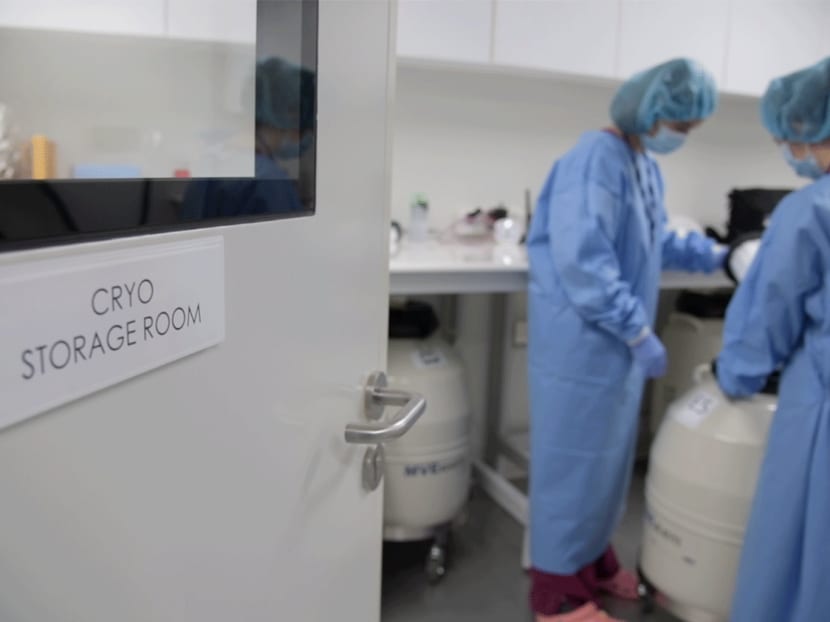
Starting 2023, Singapore women aged 21 to 35 are allowed to freeze their eggs for non-medical reasons. (Photo: Kelly Hui/CNA)
Singapore has made the unprecedented move of legalising egg freezing for women aged 21 to 35, which is expected to start in early 2023. Currently, the procedure is only allowed for women with medical conditions, such as cancer, who want to preserve their fertility.
Women are curious about the egg freezing process, including its success rate, costs and the technology involved. They also want to know: Where are the harvested eggs stored? Are there any risks involved, both in the procedure and in the freezing process? And can there be a situation where not a single egg harvested from a woman’s ovaries is usable – what happens then?
CNA Women delves into the egg freezing process to bring you the answers to these questions and more. Also, watch the video on what happens in the lab where harvested eggs are frozen and stored.
1. WHAT IS THE FULL COST OF EGG FREEZING IN SINGAPORE?
The costs are based on the number of egg retrieval cycles, and that two cycles are normally needed to retrieve sufficient healthy eggs.
The cost per egg retrieval cycle is on average S$7,000 to S$9,000 at KK Women’s and Children’s Hospital (KKH), said Associate Professor Sadhana Nadarajah, Head and Senior Consultant at Department of Reproductive Medicine at KKH. Subsequently, there is an annual charge for storage of about S$500.
On the other hand, the cost per cycle in private fertility clinics such as Virtus Fertility Centre ranges from S$10,000 to S$15,000 – which includes clinical consultation and assessment, ovarian stimulation, egg retrieval, egg freezing and storage for one year. Subsequent charges for storage start from S$900 yearly (excluding package pricing).
This means the cost can be up to S$25,000 for a comprehensive (comprising two egg retrieval cycles) egg freezing procedure, said Dr Liow Swee Lian, scientific director at Virtus Fertility Centre.
So if you’re 27 when you freeze your eggs and hope to get pregnant at 35, you would be paying storage fees that start from S$4,000.
2. IS EGG FREEZING A ONE-TIME PROCEDURE THAT COVERS ALL MY FUTURE PREGNANCIES?
If a woman wants to have a second child, the frozen eggs from one egg retrieval cycle are “typically insufficient”, Assoc Prof Nadarajah pointed out.
So a woman could go for two or three egg retrieval cycles to “bank” more healthy eggs for future use, said Dr Liow, ideally freezing a “minimum of 20 healthy eggs”.
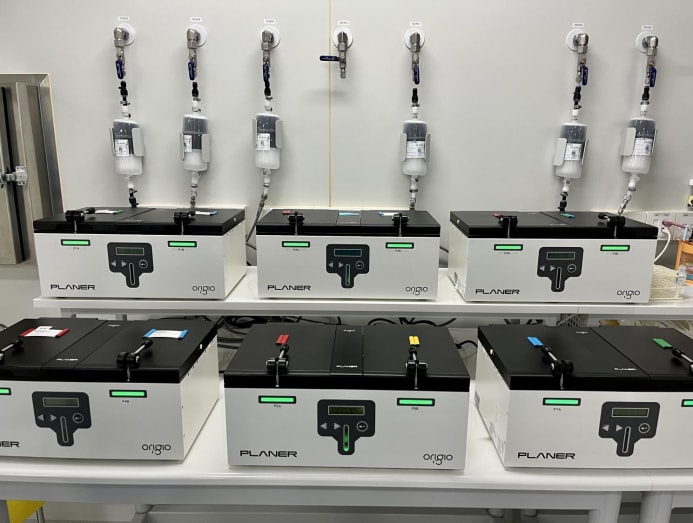
“For a woman who is 30 years old and below at the time of egg freezing, she may have two successful pregnancies from 20 frozen eggs,” he explained.
Meanwhile, women aged between 31 and 35 years old may only have one successful pregnancy from 20 frozen eggs.
3. HOW DOES MY AGE AFFECT THE EGG FREEZING PROCESS?
As egg quality decreases with age, it’s important to note that the older you are, the more egg retrieval cycles you’ll need to undergo to harvest and store healthy eggs.
While a woman’s frozen eggs do not age, she is still ageing.
According to a recent study that was published in the Journal of Obstetrics and Gynaecology in April this year, women aged 35 and below would require 10 to 15 mature eggs to have an 80 per cent chance of having a baby, Assoc Prof Nadarajah said.
Meanwhile, women aged 38 to 40 would require 25 to 30 mature eggs to achieve a live birth rate of 65 to 80 per cent. In this case, based on her egg quality and ovarian reserve, she would require three to six attempts of egg retrieval cycles to obtain the required number of mature eggs, she explained.
4. IS THERE A POSSIBILITY THAT THE HARVESTED EGGS ARE NOT SUITABLE FOR FREEZING? WHAT SHOULD I DO THEN?
While an average of 10 to 15 eggs is usually harvested during the egg retrieval process, these also “include a number of deformed eggs and immature eggs which are not suitable for freezing”, said Dr Liow.
While it differs from patient to patient, he said you can expect to retrieve seven to nine healthy eggs in a cycle.

Studies have shown that a woman needs to freeze about 15 to 20 healthy eggs to achieve a live birth depending on her age and egg quality, explained Dr Sheila Loh, a specialist in Obstetrics & Gynaecology and Consultant at Raffles Fertility Centre.
This means women should be aware that two egg retrieval cycles are usually required to retrieve a suitable number of viable eggs, said Dr Liow.
The success of egg freezing is heavily dependent on the quality and quantity of frozen eggs.
And if your eggs are not usable in the first egg retrieval cycle, you can repeat another round of hormonal injections and egg retrieval procedure in the next cycle or in two months, he added.
At the end of the day, not all eggs will lead to a pregnancy or a baby, said Assoc Prof Nadarajah. “The success of egg freezing is heavily dependent on the quality and quantity of frozen eggs.”
5. DOES ELECTIVE EGG FREEZING CARRY ANY RISKS?
Women should be aware that egg freezing (which involves the egg retrieval procedure), is an invasive procedure and there are surgical risks, such as risks of bleeding or infection, said Assoc Prof Nadarajah. The risks of complications, however, are “very low”, she added.
When eggs are frozen, they are frozen in time, and are stored in a state of hibernation.
It’s also important to note: “While a woman’s frozen eggs do not age, she is still ageing,” Assoc Prof Nadarajah said.
She would still be at risk of developing medical conditions such as fibroids, endometriosis, high blood pressure and diabetes as she grows older. “These conditions may complicate the pregnancy,” she said.
There is also a “small risk” of ovarian hyperstimulation syndrome, said Dr Loh, which occurs when too many ovarian follicles have developed from the hormonal injections. If you manage to produce more than 20 eggs, she said, watch out for symptoms such as severe bloating, shortness of breath and abdominal pain. The chance of it occuring in egg freezing cases is, however, “rare”, she added.
WHAT TO EXPECT FROM THE EGG FREEZING PROCESS
Dr Liow Swee Lian, scientific director at Virtus Fertility Centre, lists the steps a woman who wants to freeze her eggs would go through.
- Step 1: Book a consultation with a fertility doctor who will do an ultrasound scan to check on the general health of the womb and fallopian tubes, as well as order a blood test to look at your hormonal profile.
- Step 2: If your scan and test show that you are suitable for egg freezing, the process will start on Day 2 of your menstrual cycle, where you’ll self-administer hormonal injections at home to stimulate egg production (also known as ovarian stimulation). You’ll do these daily injections for about two weeks.
- Step 3: During the two-week period, you’ll have to head to the clinic for one or two days for ultrasound scans and blood tests, to track your progress and monitor the growth and development of the follicles, which contain the eggs.
- Step 4: On day 10 of the menstrual cycle, you’ll be given a “trigger shot” of the human chorionic gonadotropin (hCG), a hormone produced during pregnancy, to “mature the eggs” or trigger ovulation, said Dr Liow. The eggs will be retrieved 34 to 36 hours later, which usually coincides with Day 14 to Day 16 of the menstrual cycle. The procedure is done under general anaesthesia and takes less than 30 minutes.
- Step 5: The harvested eggs will be processed in the lab. Immature eggs will be grown in the incubators for 24 to 48 hours till they mature. Only mature eggs will be selected for freezing in a process called vitrification – a process that ensures the egg is not damaged.
- Step 6: The frozen eggs are then stored in “specialised straws”, before submerging them (typically two eggs in one straw) in tanks filled with liquid nitrogen at a temperature of -196 degrees Celsius.
- Step 7: When you and your partner are ready to have a baby, the eggs will be “warmed” to body temperature (37 degrees Celcius) and fertilised with sperm via in-vitro fertilisation (IVF). Note that in Singapore, IVF is allowed only within the confines of marriage.
6. WHICH PART OF THE EGG FREEZING PROCESS IS THE MOST INVASIVE OR UNCOMFORTABLE?
Egg retrieval is the most invasive part of the process, where a “long thin needle” is inserted into the ovaries via the vagina to retrieve the eggs, explained Dr Liow. This is done under general anaesthesia, and takes no longer than 30 minutes – usually 10 to 15 minutes, he added.
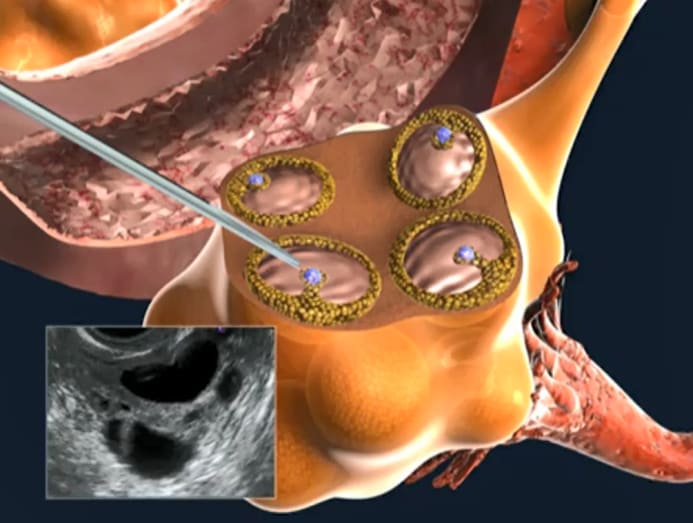
Immediately after the procedure, you’ll remain in the hospital or fertility clinic for about two to three hours to allow the anaesthesia to wear off before going home. “It is advisable to have a close friend or family member to send you home as you may experience some nausea or dizziness,” explained Dr Loh.
“The most common side effects following egg retrieval are vaginal soreness, abdominal cramping, spotting and bloating, which can cause discomfort,” Dr Liow said.
These side effects are normal, he said, and patients typically are able to resume normal activities within a few hours, and fully recover within a couple of days.
At the same time, some women may also find that the hormone stimulation drugs (which are self-injected throughout the cycle prior to egg retrieval) cause them “discomfort and pain”.
7. HOW SHOULD I PREPARE FOR THE HORMONAL INJECTIONS AND/ OR THE EGG RETRIEVAL PROCEDURE?
In ovarian stimulation, you’ll need to self-administer hormonal injections at home to stimulate egg production. You’ll do these daily injections for about two weeks.
When it’s time for the egg retrieval procedure, Dr Liow recommended that women take a day’s leave for it.
The most common side effects following egg retrieval are vaginal soreness, abdominal cramping, spotting, and bloating, which can cause discomfort.
Dr Loh advised taking it easy with work commitments and reducing “heavy physical exercises” when you are undergoing ovarian stimulation and egg retrieval procedure. “The enlarged ovaries (from ovarian stimulation) may be painful and can twist, causing complications,” she explained.
She added you should also avoid consuming alcohol and/or smoking for at least two months before the ovarian stimulation process.
From 2023, women aged 21 to 35 can go for elective egg freezing in Singapore. But what’s the process like? CNA Women had an exclusive behind-the-scenes look at Virtus Fertility Centre.
8. HOW MUCH DOWNTIME IS NEEDED AFTER THE EGG RETRIEVAL PROCEDURE?
It is similar to that of couples undergoing IVF, said Dr Loh. After your eggs are retrieved, consider resting for another three to seven days as the ovaries may feel “sore and heavy”. Complete bed rest isn’t necessary, however.
9. WHERE ARE THE FROZEN EGGS STORED?
The fertility experts that CNA Women spoke to said the eggs are stored in receptacles (or “straws”), which are submerged in storage tanks filled with liquid nitrogen at a temperature of -196 degrees Celsius.
According to Dr Liow, two eggs are typically stored in one straw.
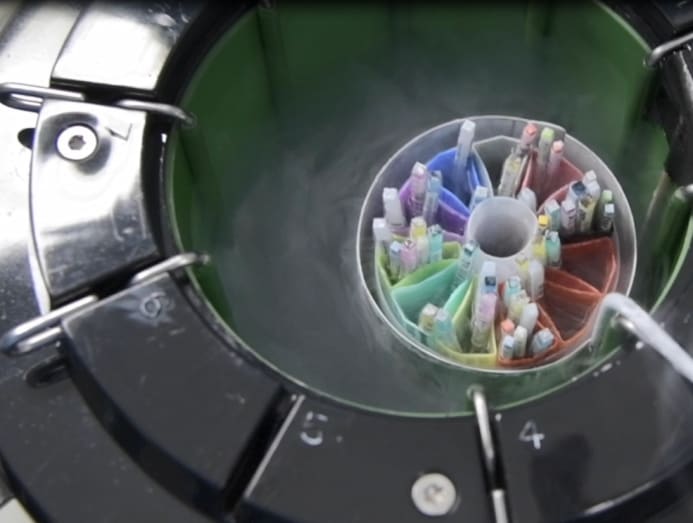
10. DO FROZEN EGGS AGE?
The short answer is no – they remain the same age as when they were retrieved from your ovaries.
“When eggs are frozen, they are frozen in time, and are stored in a state of hibernation,” said Dr Liow. They do not get older “regardless of how many years later they are used”. So if you decide to freeze your eggs when you’re 32 years old, your frozen eggs will remain 32 years old forever.
“In theory, they can be kept for many years with minimal risk of deterioration in quality. However, we recommend that they be kept for not more than 15 years,” said Dr Liow.
And while there is currently no age limit for when a woman has to use her frozen eggs, Dr Liow pointed out that maternal age has an impact on pregnancy outcome. “Women who are at an advanced age have higher risks of complications in their pregnancies,” he said.
11. HOW DO HOSPITALS OR FERTILITY CLINICS ENSURE THE SAFETY AND LONGEVITY OF FROZEN EGGS?
It’s crucial to monitor the liquid nitrogen in the storage tank to safeguard the quality and viability of the frozen eggs in the long term, said Yong Yin Yin, a principal embryologist at Raffles Fertility Centre.
“Storage tanks are fitted with sensors and a continuous monitoring and alarming system that sends us alarms in the event of any failure or conditions that might damage the frozen eggs in storage,” she explained.
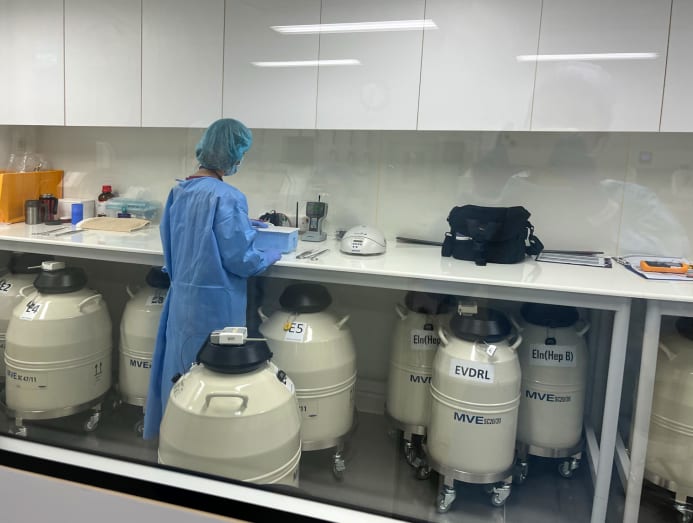
The liquid nitrogen is consistently topped-up in the storage tanks, too, she added. This helps ensure the storage tanks will not “dry out”.
Should there be a need to, there are back-up storage tanks that are “pre-filled (with liquid nitrogen) at all times” to transfer the frozen eggs into a “more secure” tank, she explained.
12. WHAT’S THE SUCCESS RATES OF FERTILISATION WHEN USING THE FROZEN EGGS?
The fertilisation rate for frozen eggs is as good as “fresh” eggs – an average of 80 per cent, Dr Liow said. “This is because an ultra-rapid freezing process, called vitrification, ensures the egg is not damaged, with a survival rate of almost 100 per cent,” he explained.
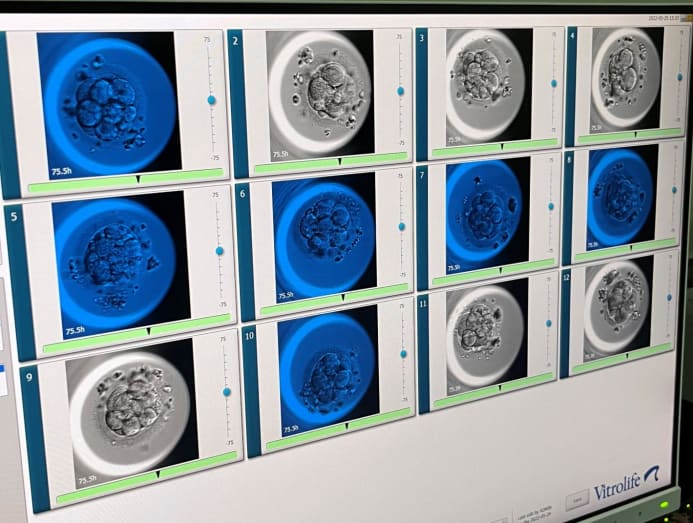
This technique, which became a “routine practice” about a decade ago, gives a better outcome as compared to the older method of slow freezing, added Assoc Prof Nadarajah.
According to a 2017 study in the US discussing the past and current trends of the vitrification method, the benefits of vitrified embryos and eggs were gaining worldwide acceptance by 2010.
13. WHAT HAPPENS TO THE FROZEN EGGS IF, FOR WHATEVER REASON, I DECIDE NOT TO USE THEM?
According to Dr Liow, you can choose to either donate them to other couples anonymously or donate them for research and development purposes. You can also opt to dispose of them outright, he added, which “many couples” often opt to do.
14. IS IT POSSIBLE TO TRANSFER MY FROZEN EGGS TO ANOTHER LAB OR FACILITY IN SINGAPORE OR OVERSEAS?
Yes, the frozen eggs can be transferred to another facility with the woman’s consent, said Dr Liow. The woman would be the owner of the frozen eggs, even if she marries in the future; there is no joint ownership of frozen eggs.
“Specifically designed transport canisters are used to ensure the eggs are protected and maintained at the appropriate liquid nitrogen temperature,” he said.
Hence, it is “very safe” for sperm, eggs and embryos to be transported between clinics, around the world, on a regular basis, he added.
15. WHAT HAPPENS WHEN YOU ARE READY TO USE THE FROZEN EGGS?
Let the clinic know that you and your husband are ready to proceed with fertility treatment so you can meet with the fertility specialist to discuss the process, said Dr Liow.
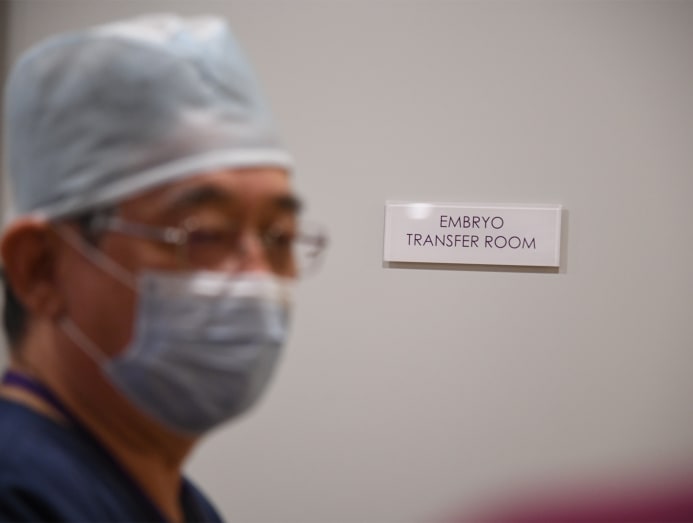
Then you will consult with their fertility specialist again to begin the IVF cycle at the start of your menstrual cycle.
On the day of ovulation, your husband provides a sperm sample, whereupon the eggs will be “warmed” and inseminated with the sperm. More than 30 years ago, IVF would involve the sperm and egg being placed in a petri dish while an embryologist waits for the sperm to fertilise the egg on its own, said Dr Liow.
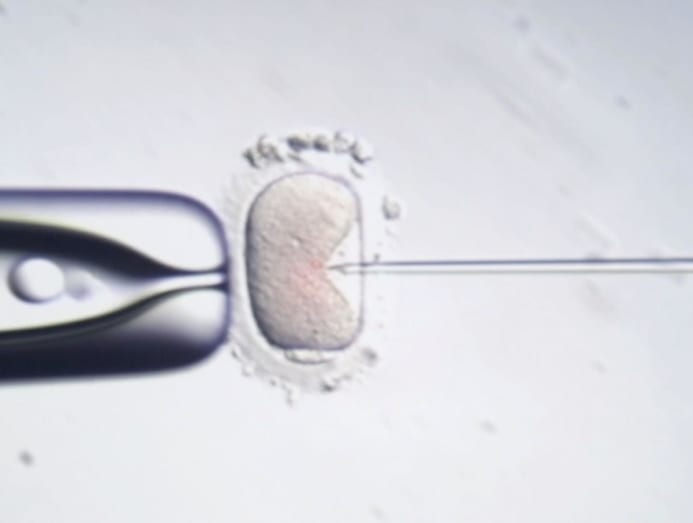
Since 1992 however, fertility clinics now use a process called Intracytoplasmic Sperm Injection (ICSI), where “a single sperm is injected into each egg to assist fertilisation using very fine micro-manipulation equipment”, he added.
As an additional part of the IVF cycle, the technique ensures that the “best sperm” is directly injected into the egg – offering a “significant increase in fertilisation and pregnancy rates, and a reduction in miscarriage rates”, said Dr Liow.
CNA Women is a section on CNA Lifestyle that seeks to inform, empower and inspire the modern woman. If you have women-related news, issues and ideas to share with us, email CNAWomen [at] mediacorp.com.sg.









